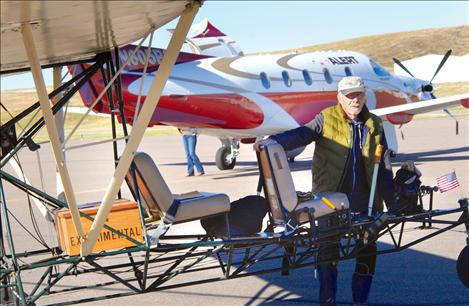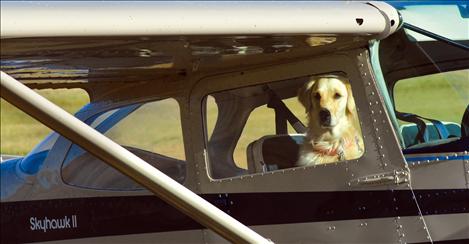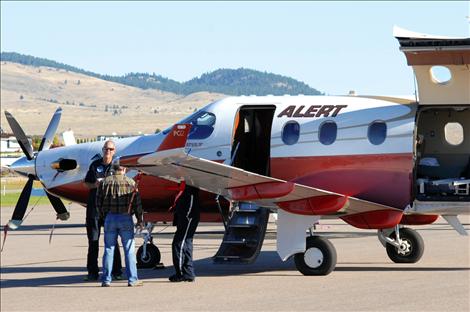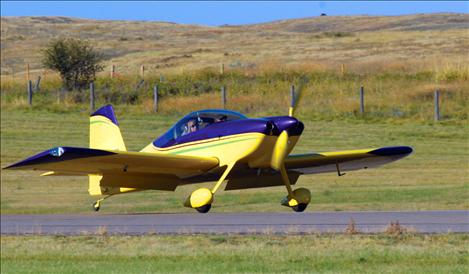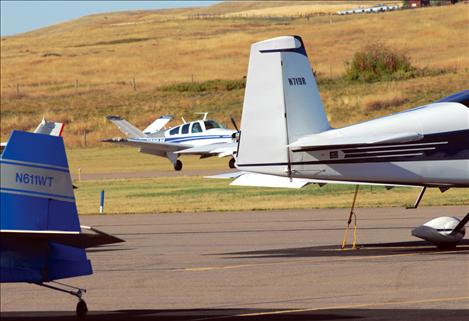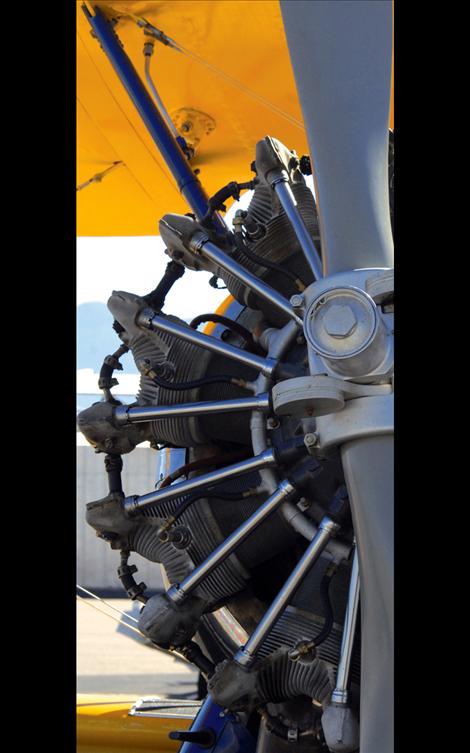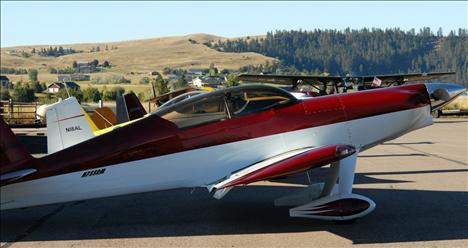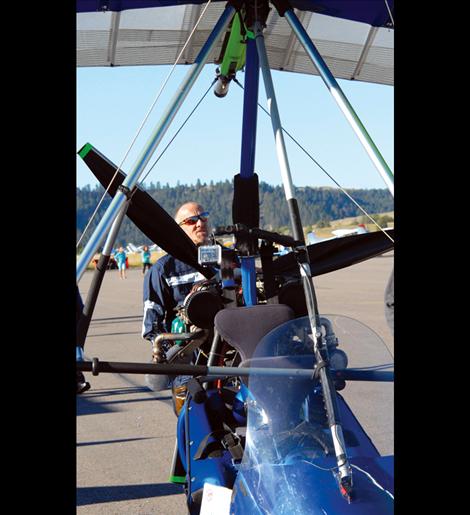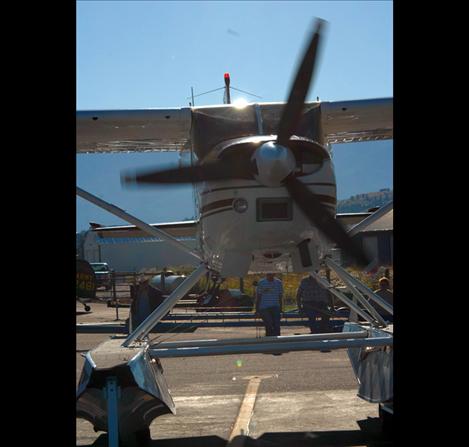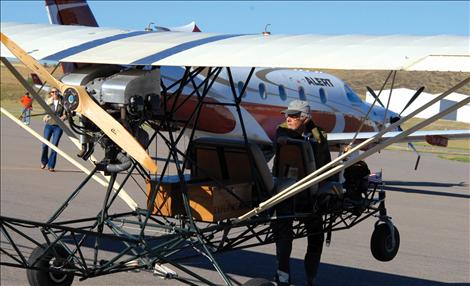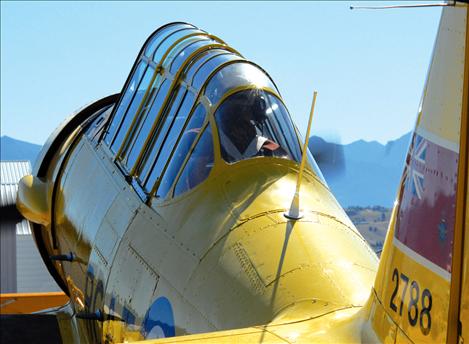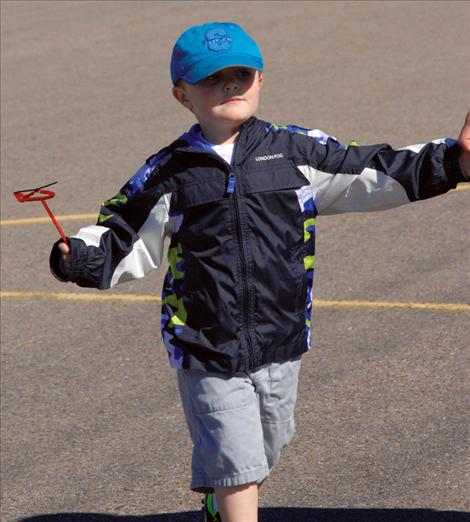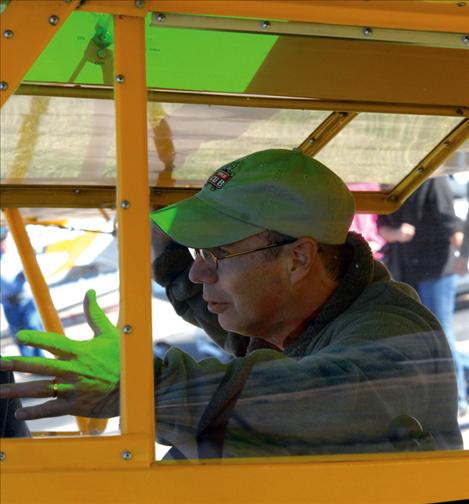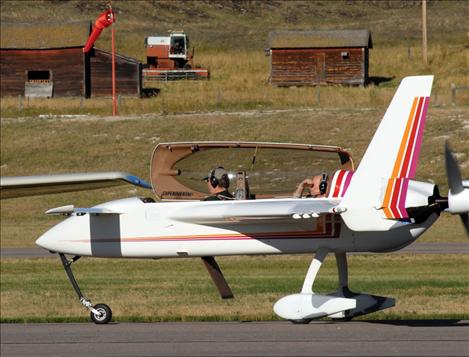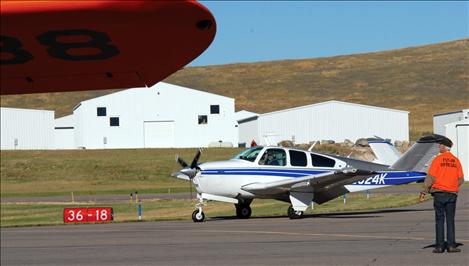Throb of engines announce Polson Fly-In
Hey savvy news reader! Thanks for choosing local.
You are now reading
1 of 3 free articles.
POLSON — “Breezy” Bob Alm landed his Breezy at Polson Airport Saturday. The aircraft looked like a pair of wings welded to couple of ladders. Immediately he began peeling off layers of down coats, although he said the weather wasn’t too bad on Sept. 5 for the Polson Fly-In.
Described as an open airplane, the Breezy flies at about 60 knots and about 1,000 to 1,500 feet off the ground. There is no cockpit; the pilot is front and center. Alm rebuilt the plane 17 years ago and then traveled around the 48 states for a year, raising awareness for cancer.
“I ended up here,” Alm said, meaning Montana.
More than 68 planes took advantage of the beautiful fall day and the late kickoff for the Griz game and attended the Polson Fly-In, according to Joe Kuberka, president of Experimental Aircraft Association Chapter 1122, which hosts the event. The group served approximately 350 breakfasts, too.
“I’m pleased,” Kuberka said. “It’s the first year I’ve been president, and I’ve only been here four years. It’s the biggest one I’ve seen.”
With a variety of the airplanes, including more unusual planes such as Hank Galpin’s 1928 TravelAir 6000; a Rocket, similar to those handbuilt RVs; and a Bird Dog L-19, a World War II spotting aircraft, the Fly-In was successful.
Three brothers — Bridger, Ben and Indy Groves — came to the Fly-In with their dad, Zach.
Ben liked the helicopters more than the planes, and Indy, 3, liked “the orange plane.”
Zach was enjoying the nice weather.
“It creates such a great turnout,” he said, smiling, after buckling young Indy into his car seat.
Dan, a passerby from Olympia, Washington, said he liked the MIG. The MIG is a Russian trainer jet from Czechoslovakia. Dan said the owner replaced the Czech engines with American ones, lowering the weight and increasing the thrust.
Bob Sneberger’s plane wasn’t a jet; it was a 1945 Piper J3 Cub, bright yellow. In the 1940s and ‘50s more pilots learned to fly in one of these than in any other plane. Students start flying in the front seat and then move to the back seat.
“There aren’t many of these around,” Sneberger said.
The J3 started as a war bird, but the war was over so it went right to a flight school.
“They were sold new for $2,010,” Sneberger said.
There’s no electricity in the plane so the propeller needs to be hand-turned. It’s an all-fabric plane, which saves weight. The Cub is also a tail dragger, which means the third point of the plane, the tire, is on the back. The fuel gauge is so primitive it has a cork on it.
Sneberger said he’s owned the plane since January. It was restored in San Diego in 1994.
“The first guy who owned it was a barnstormer,” he said.
Sneberger said he flies the J3 four or five days a week, and it gets good gas mileage at 4.5 gallons per hour.
Chuck Lazaro, a visitor at the Fly-In, said he learned to fly in a J3 Cub in 1950 in Illinois.
“There was a runway in all directions,” Lazaro said.
There were visitors, not runways, in all directions at the Polson Airport. That made Kuberka happy.
“The idea is to show the airport to the community so they can come out and enjoy it,” he said, adding that he wanted to thank all the sponsors and volunteers.















